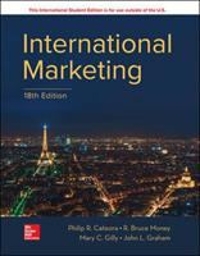Question
DONT ANSWER 1-5, JUST ANSWER 6,7,8 The answers to 1-5 are already there in case you need them to compute 6,7,8 Question: A monopolist faces
DONT ANSWER 1-5, JUST ANSWER 6,7,8
The answers to 1-5 are already there in case you need them to compute 6,7,8
Question: A monopolist faces some consumers (called group-H consumers) with an inverse demand function for each consumer given by p = 80 q. The firm's total cost function is given by: C(q) = 20q (so that M C = 20 for all q). First suppose that the firm only uses linear pricing (i.e., charges only a unit price p).
1. Find the price maximizing the firm's profits. ($50) 2. What are the corresponding profit and surplus per consumer? Profit=$900, Surplus= $450 Now suppose that the firm can use a two-part tariff (pH , FH ), with pH the unit price and FH the fixed part. 3. First suppose the firm sets its unit price pH equal to the profit-maximizing linear price found in part (1) above. What fixed fee FH will the firm set at this price, and why?
The firm sets its unit price pH equal to the profit-maximizing linear price = $50
Fixed fee FH will the firm set at this price = consumer surplus = $450
4. Bearing in mind the opportunity to set a fixed fee FH , what unit price pH will the firm set? What fixed fee FH will it charge in view of this unit price?
Fixed fee = consumer surplus = area above the price line and below the demand curve = 1/2 * (80-20) *60 = 1800
The unit price that is charges = MC = 20
5. Compute the firm's profit per consumer and compare with the one found in the linear pricing case. Comment.
Now, a consumer comes and pay 1800 as fixed fee and consumes 60 units at $20 each.
Profits = Total revenue - total costs = 1800 + 60*20 - 20*60 = 1800
Profit is higher by 900 as compared to linear pricing
ANSWER THE FOLLOWING QUESTIONS.
Finally suppose that there is a new group of consumers, called group L, with an inverse demand function per consumer given by p = 60 q. Further suppose that the firm cannot tell whether a consumer belongs to group H or group L. In view of this expanded market, the firm introduces a new block price contract targeted at group consumers. If a consumer chooses this block-price contract, they may purchase the fixed quantity qL = 40 for a fixed total payment PL = 1600. The firm allows consumers to choose either contract. That is, each consumer may either pay the up-front fee FH and buy any quantity they choose at the unit price pH , or buy the fixed quantity qL = 40 for the fixed payment PL = 1600.
6. Show that type H consumers prefer the new block-price plan (qL = 40, PL = 1600) to the original two-part tariff (pH , FH ) found in part (4). [That is, calculate a type-H consumer's net surplus from the new block pricing plan, and compare this to their surplus from the original tariff (pH , FH ) found above.]
7. Taking as given the block-pricing plan (qL = 40, PL = 1600), what is the largest fixed fee FH the firm can charge such that type-H consumers will choose the revised two-part tariff (pH , FH ) instead of the new block contract (qL, PL)?
8. Briefly discuss how the firm should modify its menu of contracts to maximize profit subject to the constraint that each type of consumer chooses the tariff intended for them. Note: Here a qualitative discussion will suffice; you are not required to compute the profit maximizing contracts!
Step by Step Solution
There are 3 Steps involved in it
Step: 1

Get Instant Access to Expert-Tailored Solutions
See step-by-step solutions with expert insights and AI powered tools for academic success
Step: 2

Step: 3

Ace Your Homework with AI
Get the answers you need in no time with our AI-driven, step-by-step assistance
Get Started


